That Useful Wine Site
Search, or just roll your cursor over the colored boxes farther below.click the “x” to dismiss Search-results block.
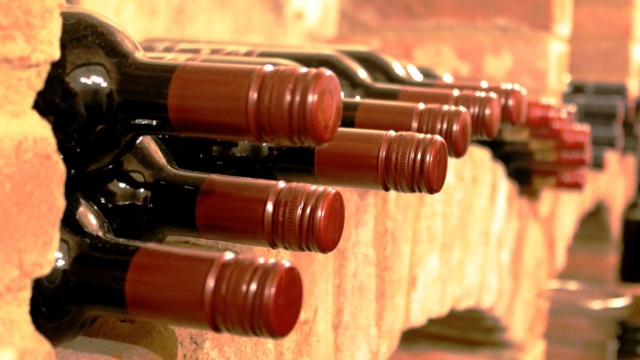
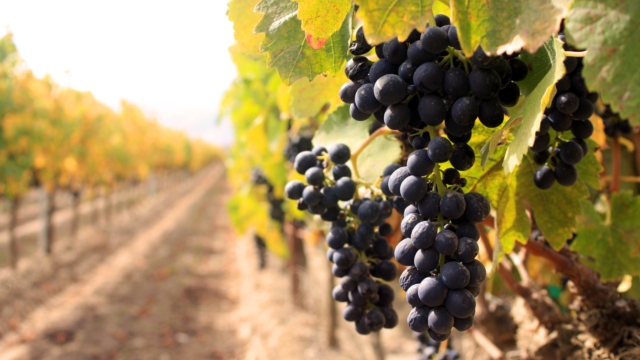
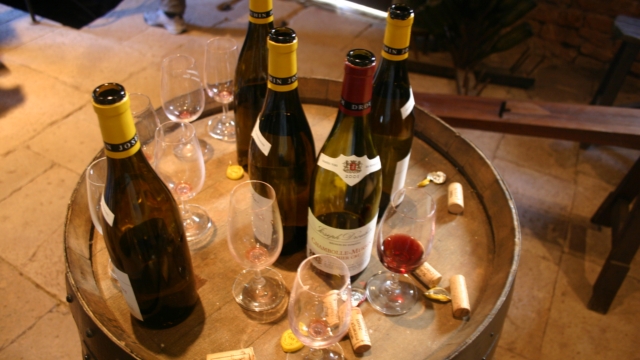
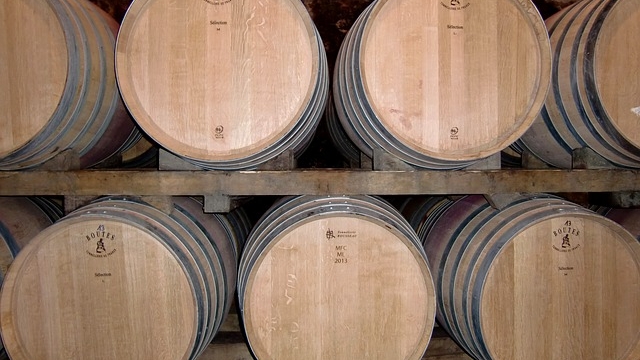
Advertisement:
Advertisement:
Quick page jumps:
(Synonyms: Beyaz Riesling, Johannisberg, Kleinriesling, Klingelberger, Lipka, Petit Rhin, Raisin Du Rhin, Rajinski Riesling, Renski Riesling, Renski Rizling, Rhein Riesling, Rheinriesling, Riesling Edler, Rielsing Gelb, Riesling Renano, Riesling Rhénan, Riesling Weisser, Risling, Rizling Rajnski, Ryzlink Rýnský, Starovetski, Weisser Riesling, White Riesling)
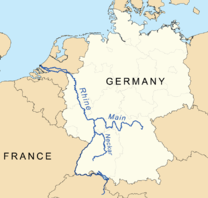
Riesling is a white-wine grape originating in the Rhine Valley of Germany. Something that may surprise those whose acquaintance with the variety has been limited to inexpensive, over-sweet plonk is that Riesling is widely considered one of the dozen and a half or so “Noble wine grapes” of the world, and moreover was one of the original three white-wine grapes so designated (many think it the greatest white-wine grape of all). Despite that, it gets little respect in the U.S., being widely regarded as simply that too-common cheap, simple, sweet plonk.
The Riesling grape is naturally a very high-acid grape, which means that when properly vinified, it can not merely withstand bottle age, but continue to develop and improve, sometimes for many decades. The high acid, combined with high natural sugars, makes possible a very evenly-balanced wine, which can well display the rich and deep flavors also natural to the grape.
Riesling wines are typically highly aromatic, with complex and profound floral scents in the nose, which also appear in the taste. Moreover, it is a wine that is quite apt at displaying the much-prized quality of terroir (at least when respectfully vinified). Curiously, fine Rieslings also exhibit a quality commonly described as “petrol”, which does not sound at all appetizing but which somehow, in Rieslings, manages to be so (though some wine drinkers are so repelled by the idea that mention of it as a Riesling characteristic is being downplayed by makers, some of whom even strive to minimize or eliminate it, despite the harm they thereby do to the overall flavor, character, and age-worthiness of their wines).
Riesling is very rarely blended, and almost as rarely sees any oak (save occasionally some “neutral” oak). It is never made as a “woody” wine.
The biggest problem Riesling presents to the consumer is its sweetness: not how sweet it is or isn’t, but knowing how sweet it is or isn’t. Rieslings can be and are vinified everywhere from bone dry (especially in Alsatia) to dessert-sweet (many German wineries produce a veritable host of Riesling bottlings, differing chiefly in their sweetness), and it was long a problem for shoppers, even with a bottle in hand to inspect, to try to determine which sort they might be dealing with. Especially for Old World Rieslings is this difficult: Goethe famously remarked that “Life is too short to drink poor wine”, leading Martin Amis to wittily remark something to the effect that reading a German wine label is another thing life’s too short for. Fortunately, in recent years an organization called the International Riesling Foundation came up with a uniform sweetness-labelling scheme that now adorns many bottles of Riesling. Its essence is four levels of sweetness: Dry; Medium Dry; Medium Sweet; and Sweet. But if you encounter bottles not so labelled, here's a clue: look at the alcohol content. If the alcohol is 11% or under, the wine is definitely off dry; if it is 13% or above, the wine is dry; if it is from 11% to 13%, the sweetness is probably proportionately along the spectrum (“probably” because other factors influence the perception of sweetness in a wine).
(Recall that alcohol is produced by the fermentation of the sugars in the raw grape juice; the more alcohol there is in the final wine, the more of the original sugars that were fermented away. There is a good, detailed discussion of the sweetness of Rieslings at the German Wine Lover site, and another at the StarChefs site.)
Note that label notes other than those set forth by the IRF are chancey guides at best; many an American-made Riesling labelled “dry” would go best with the dessert course. Nor are the classic Germanic “ripeness” terms (Kabinett, Spätlese, Auslese, and so forth)—even if you memorize them—much help, because the ripeness only indicates the potential of the grapes: a given vintner can vinify a given lot of grape juice as he or she pleases, making (for example) a “Spätlese” that is actually drier than a “Kabinett”, though the Spätlese juice was originally higher in sugars. In the end, the consumer must, if there is no IRF mark available, go by the alcohol content and, ideally, by the reputation of the wine (which requires some foresight and study). Even if you have an appetite for all levels of sweetness, you still want to know which one you’re going to get on a given day.
Rieslings are today made all over the world, over a huge range of both style and quality. In the U.S., its history has been a sad one. An early flood of Rieslings, made simple and sweet and cheap, firmly planted the image of Riesling as a cheapo wine; today, winemakers who want to make wines that live up to the potential of the grape fight an uphill battle, because many consumers simply will not pay more than a few dollars for a bottle of “that cheap goop”. The tide is starting to turn, but progress so far is glacial. (Those of an age will recall the same thing having happened to the excellent noble grape Chenin Blanc.)
Riesling does well in cool climates, thriving where other “noble” grapes might struggle, and so has been popular in regions with limited climatic possibilities for wine. Probably the most important Riesling sources today are, more or less but not exactly in this order, Germany, the Alsace region of France, Austria, Australia and New Zealand, the U.S., and Canada, though those are far from all. There is no definite pattern associating style with region, but broadly speaking the middle-European makers tend to go for dry Rieslings, while new World makers tend to style a bit off dry. The regional wines also vary a deal owing to the differing soils in which they are grown, the wine being, as already noted, excellent at conveying terroir. Not many makers are producing the great Rieslings that want one or more decades of aging to approach their full potential, but there are probably more Alsatians of that sort than in the other regions.
If one relies on Wikipedia, these are (always painting with a very broad brush) the regional characteristics:
Germany: "transparency" in flavor and presentation of terroir; balance between fruit and mineral flavors.
Alsace: mostly very dry with cleansing acidity and a thick body that coats the palate.
Austria: generally thick bodied with a strong clarity of flavor and rich aroma; typically a long finish that includes hints of white pepper.
Australia: an oily texture and citrus fruit flavors in their youth, with a smooth balance of freshness and acid as they age.
New Zealand: lighter and more delicate wines.
U.S.: there are intramural variations—New York State, an effervescent light body with a similarly light, mellow flavor, dynamic though rarely robust; California, softer, fuller, and more diverse flavors than a typical German Riesling; Washington State, crisp lightness with an easily detectable peach and mineral complex.
Canada: especially rich and bright.
Again a caution: those are rough rules of thumb with, no doubt, countless exceptions.
Factoid: Riesling has its own producer society, the International Riesling Foundation, whose web site is a useful resource on the subject.
The market seems to have finally overcome its reluctance to price Riesling at more than supermarket levels. Thus, while there’s a lot of fine Riesling out there, much of the better stuff is outside our price range, often well outside. Even so, there is a fair amount of decent Riesling, but not so much affordable but really nice Riesling. Here is what we found.
• This wine’s Wine Searcher “Reviews” page.
• This wine’s CellarTracker review pages.
• Retail offers of this wine listed by Wine Searcher.
• Retail offers of this wine listed by 1000 Corks.
• This wine’s Wine Searcher “Reviews” page.
CellarTracker has two separate listings for this wine:
• This wine’s CellarTracker review pages.
• This wine’s CellarTracker review pages.
• Retail offers of this wine listed by Wine Searcher.
• Retail offers of this wine listed by 1000 Corks.
• This wine’s Wine Searcher “Reviews” page.
• This wine’s CellarTracker review pages.
• Retail offers of this wine listed by Wine Searcher.
• Retail offers of this wine listed by 1000 Corks.
• This wine’s Wine Searcher “Reviews” page.
• This wine’s CellarTracker review pages.
• Retail offers of this wine listed by Wine Searcher.
• Retail offers of this wine listed by 1000 Corks.
• This wine’s Wine Searcher “Reviews” page.
• This wine’s CellarTracker review pages.
• Retail offers of this wine listed by Wine Searcher.
• Retail offers of this wine listed by 1000 Corks.
Our nomination is the Domaine Ostertag “Muenchberg” Alsace Grand Cru Riesling, which retails for around $34 to $83. (That is their base “Muenchberg” Riesling bottling, not any of their sub-named botlings (such as their Vendange Tardive, Vielle Vignes, or A360P).
• This wine’s Wine Searcher “Reviews” page.
• This wine’s CellarTracker pages.
• Retail offers of this wine listed by Wine Searcher.
• Retail offers of this wine listed by 1000 Corks.
Advertisement:
Advertisement:
|
|
This site is one of The Owlcroft Company family of web sites. Please click on the link (or the owl) to see a menu of our other diverse user-friendly, helpful sites. |
|
| (Note: All Owlcroft systems run on Ubuntu Linux and we heartily recommend it to everyone—click on the link for more information). | ||
|
All content copyright © 2024 The Owlcroft Company
(excepting quoted material, which is believed to be Fair Use). |
This web page is strictly compliant with the W3C (World Wide Web Consortium) Extensible HyperText Markup Language (XHTML) Protocol v1.0 (Transitional) and the W3C Cascading Style Sheets (CSS) Protocol v3 — because we care about interoperability. Click on the logos below to test us!
This page was last modified on Saturday, 30 October 2021, at 11:26 pm Pacific Time.
Some Descriptions of Riesling Wines
“In cool climates, (such as many German wine regions) Riesling wines tend to exhibit apple and tree fruit notes with noticeable levels of acidity that is sometimes balanced with residual sugar. A late-ripening variety that can develop more citrus and peach notes in warmer climates (such as Alsace, parts of Austria). In Australia, Riesling is often noted for a characteristic lime note that tends to emerge in examples from the Clare and Eden Valley in South Australia. Riesling’s naturally high acidity and pronounce fruit flavors gives wines made from the grape immense aging potential with well-made examples from favorable vintages often developing smokey, honey notes and aged German Rieslings, in particular, taking on a ‘petrol’ character…Riesling wines are often consumed when young, when they make a fruity and aromatic wine which may have aromas of green or other apples, grapefruit, peach, gooseberry, honey, rose blossom or cut green grass, and usually a crisp taste due to the high acidity. However, Riesling’s naturally high acidity and range of flavo rs make it suitable for extended aging. International wine expert Michael Broadbent rates aged German Rieslings, some hundreds of years old, highly…On release, certain Riesling wines reveal a striking petrol note (goût de pétrole in French) which is sometimes described with associations to kerosene, lubricant or rubber. While an integral part of the aroma profile of mature Riesling and sought after by many experienced drinkers, it may be off-putting to those unaccustomed to it, and those who primarily seek young and fruity aromas in their wine.”
“Riesling wines can be highly aromatic with apple, peach and pear at the forefront mixed with delicate floral undertones and often honey and spice on the nose. On the palate, Rieslings echo the apple, pear and peach along with citrus and tropical nuances. Rieslings tend to pick up a noticeable ‘minerality’ from their native soils, explaining why hints of slate or limestone can be exhibited.”
“Tasting Riesling starts in your nose. It’s one of the most aromatic grape varieties in the world. The primary fruit aromas in Riesling are nectarine, apricot, honey-crisp apple and pear. Besides just fruit, you’ll often smell things like honeycomb or even to a chemical aroma similar to petrol/gas. Believe it or not, it’s these weird smells that wine enthusiasts go gaga over. Riesling is very high acid, almost to the level of a tart fruit juice like lemonade.”
“Most rocks when ground to smithereens do not have much taste or flavor. Nevertheless, few would dispute that Rieslings grown from differing soil profiles often exhibit extremely different organoleptic characteristics. Because of the lack of interference of other elements—malolactic fermentation, oak, elevated alcohol levels, etc.—one can very easily learn to distinguish the flavor of Riesling grown on schist as compared to slate or limestone. Because Rieslings are grown in such minimal soil on the steep slopes of the greatest vineyards in Germany and Austria, they must derive their moisture from exploring the fissures of the fractured subsoil, mining for water. Vines grown under these extreme conditions, as well as older vineyards (with the deepest roots) will tend to exhibit the highest degree of minerality. It is also believed by some that the putative elevated mineral content of Riesling is implicated in the wine’s prodigious longevity.”
“German Rieslings balance impressive acidity with apple and citrus fruit flavors, and range from dry and refreshing to sweet and unctuous. Alsace and Austrian Rieslings are higher in alcohol, which makes them more full-bodied, but they are quite dry, full of mineral notes. Australia’s Rieslings (the best are from the Clare Valley) are zippy and full of lime and other citrus flavors. Those from Washington State tend to split the difference, offering juicy, appley fruit and lively acidity, with a hint of sweetness. Rieslings are extraordinarily versatile with food.”
“At its best, it offers fabulous floral aromas with crisp and highly flavorful pineapple, apricot, honey and citrus fruit flavors. Known for its crispness, or acidity, even sweeter style Rieslings are not overly thick and syrupy.…Riesling might be the opposite of Chardonnay in style, lighter in body and rarely put in contact with oak, but is more than equal in terms of versatility and complexity. In Alsace, it produces crisp and dry wines for everyday drinking to the truly complex higher end wines, also dry, often needing 5 to 10 years of aging to truly capture the essence of what this grape variety can achieve; Washington State produces similar style.”
“Riesling is conspicuously absent from the core wine regions of France, Spain and Italy.…Riesling vines cover the steep, slate-rich hillsides above these famous [German] rivers, and are used to make crisp, refreshing wines with pronounced acidity. On the other side of the Rhine lies Alsace, once German but now part of France. Here, Riesling is the most important wine grape variety in terms of both quantity and (arguably) quality. Alsace Riesling has its own individual style, richer and more generous than those made in Germany…Austria also produces a large quantity of Riesling, most notably from its eastern Wachau and Kremstal regions. This is made mostly in drier styles… The high quality Rieslings now made in Australia’s Clare and Eden valleys have proved this with particular competence. Most notably, Clare Valley Riesling has emerged as a style in its own right, with crisp, citrus-scented acidity and aromas of toast and honeysuckle. Just across the Tasman Sea, New Zealand is also making high quality Riesling in each of its South Island regions, while South Africa’s Riesling is also showing promise.”
“Riesling’s great attribute is that it combines high natural acidity with tremendous fruit concentration, in both aroma and flavor. Thus, it can produce low alcohol wines of great character, at every level of residual sweetness, wines with incredible aging ability. Riesling’s other hallmark is its beautifully expressive bouquet, which suggest flowers, green apples, and honeysuckle blossoms.”
“It comes down to a combination of good acidity, fruit, and low alcohol. Acidity is what gives some punch to flavor, like lemon on a fillet of sole. It also refreshes the palate and keeps your taste buds awake. Riesling has it in spades. But if it were all bracing acidity, Riesling wouldn’t be that enjoyable. Fortunately, there’s wonderful fruit to balance things out. Finally, most Rieslings are lower in alcohol than many wines, an important factor when pairing with spicy food since too much alcohol accentuates spice. Higher alcohol also makes a wine feel heavy and can overwhelm food. There’s one other distinguishing Riesling characteristic; they’re ‘clean’. In other words, the wine’s quality and flavor is determined in the vineyard, not by the flavor of a barrel it’s fermented in (Riesling sees very little oak). As a result, a sense of place and time is present in every glass.”